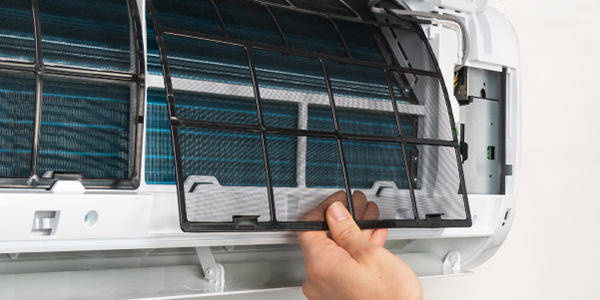Cloths Washing Mistakes that you are practicing
Take care of your cloths and avoid the mistakes that you are doing as a part for your daily routine
Some of us have relied on the wisdom passed down from our parents for years. Some of us had to teach ourselves in university. Some of us, just have a good guess. However you learned to do laundry, chances are there’s a few gaps in your knowledge – some of our list of mistakes might even surprise you.
Using too much detergent
This is probably the most common error out there. Logic would tell us that the more detergent you use, the cleaner your clothes will be. Right?
Unfortunately, using too much detergent can be damaging to your favorite jumpers and jeans. Too much of the soapy stuff can actually leave stains on your clothes, make your washing machine smell funky, and even leave tiny little holes in the fabric, that eventually turn into bigger ones. Yikes.
The solution?
age of technology folks. There exists some really snazzy features on modern washers that could end your detergent woes forever.
Overloading the drum
I do this all the time. Washing isn’t something we want to spend our weekends and evenings doing. So, we stuff what we can into the drum and hit go. But, the clothes are so tightly packed, that water and suds can’t, quite, get in. Parts of your clothes can come out unclean, under-washed.
There’s a pretty simple way of figuring out the optimum load though. If you have say, an 8kg drum, full capacity is at about 8 outfits. We think a full outfit, like – socks, underwear, t-shirt, jeans and cardigan will weigh about a kilo. So, a 10kg drum will take on 10 outfits. Etcetera, etcetera.
When it comes to figuring out the same thing for towels and things that aren’t an outfit, it’s a bit trickier. Sometimes a bit of old fashioned trial and error is all it takes. Put in however much you think is right, then ask yourself if there’s enough room round the top of the drum to let the water and soap get PROPERLY involved.
Socks into the drum last
Have you ever fished a dripping wet sock out of the rubber seal of your washer? Somehow they manage to get themselves properly lodged up to the glass, so they don’t get a proper wash or spin. My boss calls these ‘sacrificial socks’. Sometimes, socks seem to vanish completely. They run away up sleeves or become intertwined with the legs in tights.
There is a way of keeping those socks in line. You can invest in one of those little sock bags or clips to keep them in pairs, but to prevent them becoming lost to the gods of laundry, make sure they go into your drum first. Right at the back if you can. This will prevent them from being thrown forwards during the cycle and getting squashed into the rubber seal of doom.
Zipping up zippers
I do this all the time. Washing isn’t something we want to spend our weekends and evenings doing. So, we stuff what we can into the drum and hit go. But, the clothes are so tightly packed, that water and suds can’t, quite, get in. Parts of your clothes can come out unclean, under-washed.
There’s a pretty simple way of figuring out the optimum load though. If you have say, an 8kg drum, full capacity is at about 8 outfits. We think a full outfit, like – socks, underwear, t-shirt, jeans and cardigan will weigh about a kilo. So, a 10kg drum will take on 10 outfits. Etcetera, etcetera.
When it comes to figuring out the same thing for towels and things that aren’t an outfit, it’s a bit trickier. Sometimes a bit of old fashioned trial and error is all it takes. Put in however much you think is right, then ask yourself if there’s enough room round the top of the drum to let the water and soap get PROPERLY involved.
Not emptying your fluff filter
I am an advocate of the instruction manual. I know, I know. Let me explain.
The fluff filter on your tumble drier is what catches all the fine clothing dust that gets sucked from your dungarees and cable knit sweaters as they happily tumble in the drum. When this thing starts to get clogged, your drier has to work harder and harder to dry your clothes. Much harder. Letting the fluff filter get clogged can eventually be dangerous, let alone extremely inefficient.
Most instruction manuals tell you to empty the fluff filter after EVERY SINGLE USE.
When I started doing this, I noticed that my clothes were drying much quicker, it was a revelation.
Not using the correct setting for the load
It’s the most tempting thing in the world to use a quick wash for everything. Get things in, out and dried as fast as possible please and thank you. In a world where things are moving faster and faster, we want our things done now, ten minutes ago.
Quick washes are actually only designed for small loads that don’t really need that much of a thorough clean. Most of the cycle is taken up by the spin, so anything that’s a “normal level” of dirty won’t come out completely clean. This, teamed with a full load, makes things even worse.
Take a little time to get to know your machine. Chances are, there’s a wash option to match the load you’re putting in. Mixed fabrics, cottons, jeans, sports clothes. Use them, they’re good. And you’ll notice a huge difference in the wash quality if you’re a serial quick wash user. Yes you’ll have to wait a little longer to get your clothes dried and ready to go – but they’ll smell really fresh, look really clean and feel really soft. Worth it? I think so.
Saying all this, if you’re absolutely always in a rush, or live for your fast cycles, some washing machines have really upped their quick wash game. Some washing machine have this thing called Quick Power Wash, which figures out how to get the most from the detergent and water as it mixes together. The result is that you get the load done nice and fast, without having to compromise on how clean things are.
Not pre-treating stains
In the past, I’ve thrown away items of clothing after getting a stain that doesn’t want to come out. Pre-treating is easier than you think. Just apply one of the below to the stain and leave it to soak a while before it goes into your machine.
- If it’s tea, coffee, grass or something sticky like glue, vinegar or lemon juice is your best bet
- For oils, use baby powder
- You can pre-treat make-up stains with shaving foam
- Recent red wine stains can be pre-treated with salt
- You might be using too many chemicals
Take extra care when it comes to using stain removal products. Though they can be really useful in the right amounts, using them too much – or using them in the wrong way, can damage your fabrics. Most of them contain high amounts of bleaching agents, which, when used in excess can cause discoloration and even the wearing away of fabric fibers. Avoid scrubbing stains too heavily with stain removers, and make sure you check that you’re using the perfect amount for your load – the packaging will tell you what’s best.
.png)













